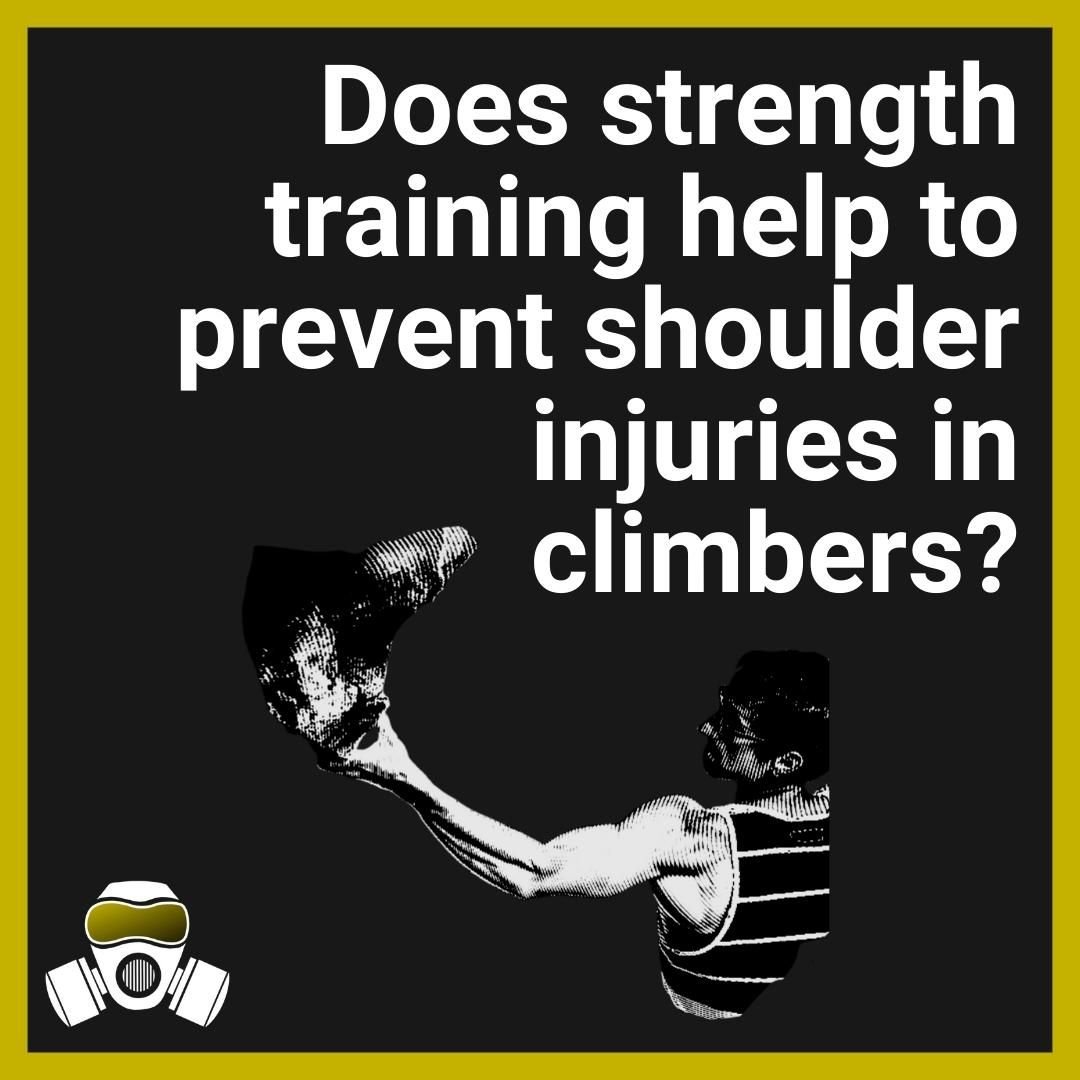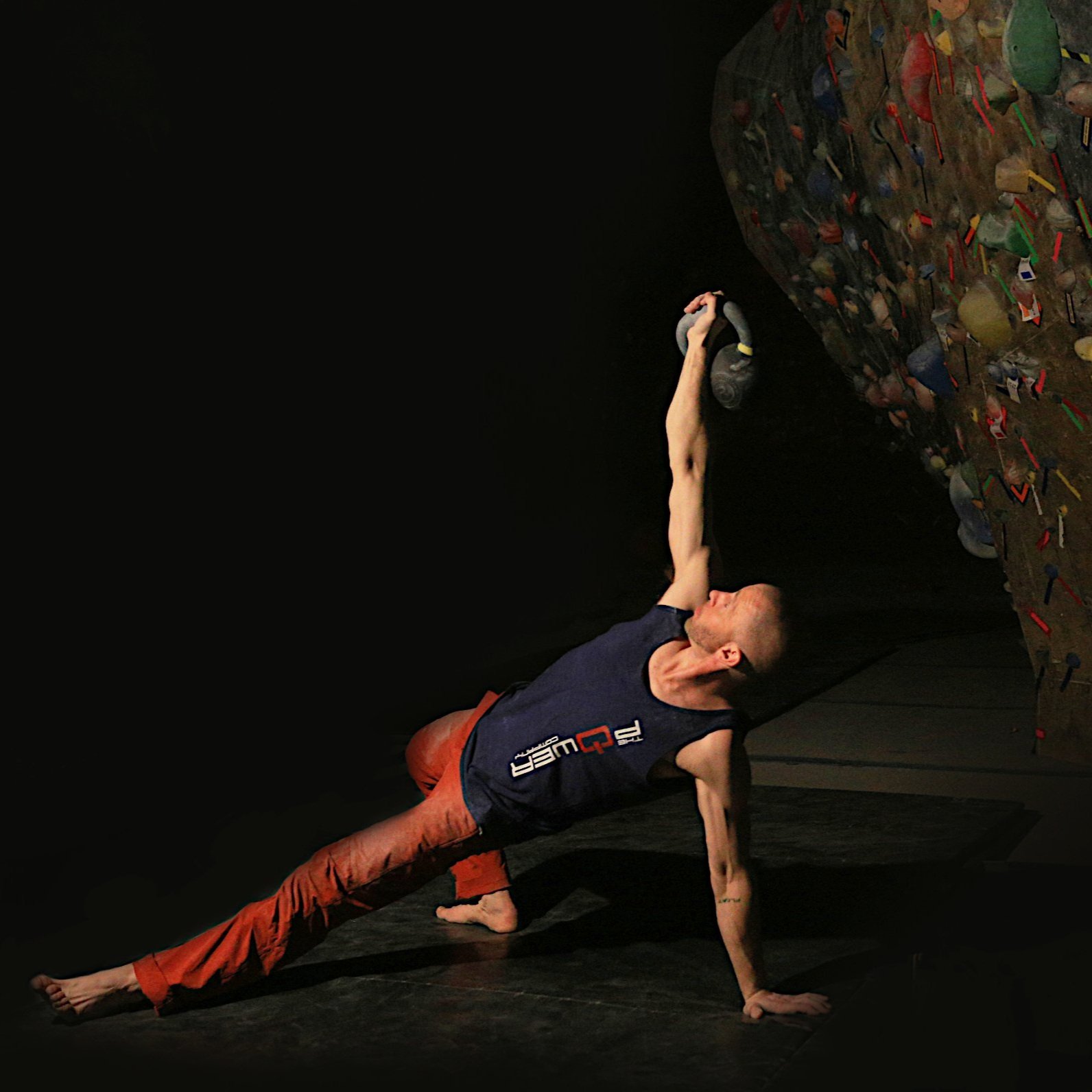Deadlifting for Climbing: Truth or Trend?
Deadlifting for climbing. It's all the rage, there is no denying that. Climbers everywhere are doing it. I've done it. I've had my athletes do it. But why? Is it really relevant? Should everyone be doing it?
Before I just launch into this thing like I tend to do, let me briefly give you my weight-lifting background, so you can either listen or completely discredit me.

I've been lifting since I was 16. When I first started, it was in the "old school" method of bodybuilding, in which everything was three sets of 10 reps, and we were lifting with the number of plates and the mirror as our main sources of feedback. We picked up everything we learned from muscle mags, with no eye toward relevance to sports or health. Back then we deadlifted, we squatted, we leg pressed, bench pressed, military pressed, and bicep curled. Millions of bicep curls. Billions, perhaps. I gained weight. A lot of it. In high school I put on 65 lbs, but it was high school; 98 lbs was only going to last for so long. After I hit 160ish, I never really got any bigger. And I was trying to. I was eating between 6,000 and 7,000 calories a day, and lifting five or six days a week, three sets of 10 to infinity.
I was still lifting heavily when I discovered climbing, and still in the same tired ways I'd learned from the muscle mags. Luckily, my mega diet had fallen off and I'd settled down at around 150 lbs. I was still benching around 255, squatting around 300, and deadlifting around 370. Oh yeah, and I was curling around 120. Still millions of curls.
And then I quit. Cold turkey, for the most part, for years. I began doing more body weight exercises. I trained those obsessively, peaking with the ability to do 100 pushups and 100 pullups in 10 minutes.
It wasn't until my second go round with climbing, at age 32, that I began really thinking in terms of training, as opposed to just "working out."
And therein may lie the main issue I have with the new deadlift trend: "working out." But we'll get to that.

Will Deadlifting Make You Stronger?
When loaded and programmed well, the answer is unquestionably yes. It is arguably the most "bang for your buck" that you can get while lifting weights. I can't refute that. Will it make you a better climber? The answer is unquestionably, "that depends." Some people will see much more benefit from deadlifting, or lifting weights in general, than others. To make the blanket statement that weight lifting will improve every person's climbing is to ignore one of the most basic principles of training: that not every person should be trained alike.
How about we take a look at who should be deadlifting (or lifting weights in general), and who shouldn't, and then we can take a look at the basic principles of training that seem all too often ignored within this conversation.
Those Whose Climbing WILL Likely Benefit From Lifting:
Let me reiterate what I just wrote there: I'm talking about those of you whose CLIMBING will benefit. The health benefits of weight lifting are well documented, and shouldn't be overlooked. But that isn't what we're discussing here. I'm simply talking about the benefits to a person's climbing. More precisely, the benefits to a person's climbing based on the assumption that we all have precious little time to spend on training for climbing. If you have unlimited training time, then all bets are off and you should definitely be including a weight lifting component in your training.
1. The Pro.
You've been climbing for a long time, and climbing is the primary physical activity you engage in. You can hold tiny holds and your technique is impeccable, but you've hit a plateau of sorts, or progression has slowed dramatically. It's likely that you need to gain more strength in order to facilitate more power, and you're going to have a tough time doing that unless you lift weights. You can't convince me that climbing is a full body sport and then only use weights on the hangboard. You need to strengthen your entire body. It all works together.
2. The Aging.
Regardless of how long you've been climbing, you're getting older. Loss of muscle mass begins to accelerate around age 35, particularly if you aren't doing anything about it. Some form of resistance training will go a long way in slowing down this inevitable process, known as sarcopenia. While this is also directly connected to your general health, your climbing will no doubt take a nosedive if you're losing muscle, and subsequently strength and mobility.
3. The Non-Athlete.
Often times, (particularly before the proliferation of mega gyms and the invasion of the super-mutant children) the people who are drawn to climbing are the ones who don't excel in other sports. These people, the non-athletes, need to be particularly aware of the consequences of having little muscle mass or athletic background. Once you have a basic grasp of the basics of safety and movement, you'll want to start climbing harder. It's a simple path: you need muscle to gain strength. You need strength to gain power. You need power to climb harder. Simple. Also, something I've failed to mention as of yet, but will talk more about later, is that a good strength program will be built on four basic movements that form the foundation of athleticism (and human movement in general): The Squat, The Hinge, The Press, and The Pull. You stand to learn as much about moving and controlling your body as you stand to gain in strength.
4. The Technique Driven.
No matter how long you've been climbing, or how old you are, you will fall into one of three categories: Strength Driven, Technique Driven, or Balanced. Don't kid yourself, most of you aren't Balanced. You know when you are muscling your way through things, or can skip the powerful pulls with fancy footwork and tiny intermediates. If you're a gorilla, I'll get to you soon. If you're a dancer, it's likely that strengthening your body and transforming that strength into power will unlock a whole new set of powerful techniques that you'll find to be more efficient (and ultimately, more graceful) than your three-points-on, static, tic-tacky approach.
Those Whose Climbing WILL NOT Likely Benefit From Lifting:
Again, lest the deadlift supporters tear their laptops apart in disgust, let me reiterate: I feel that everyone who is healthy enough and capable should be engaging in some form of resistance training. What I'm debating here is whether or not it is the best use of everyone's time to improve their climbing. Actually, I'm not debating it. I'm just stating it.
1. The New.
Let's be honest here, climbing is not running. It's one of the most technically challenging sports you can engage in, and will take time to learn. And that's not to mention the safety aspects of climbing. Until you have a pretty strong grasp on climbing movement (both vertical and steep), can hold somewhat small grips, and have a solid understanding of belaying, ropework, spotting, pad placement, and ethical practices, then it's likely that your time shouldn't be spent in the weightroom. Most of the people espousing lifting for climbing are veteran climbers, and might forget all the time they spent learning these things while not lifting at all.
2. The Lifters.
You love it. You've been lifting for years, and assume that it's gotten you to where you are in climbing. At least 25% of your time exercising is spent strength training. It's probably the thing holding you back. The law of diminishing returns is in full effect here, meaning that you've likely already milked out most of the benefits of lifting that you're gonna get. This isn't to say that you should stop. Particularly because you love it, you should continue. Just cut back a little and focus on some more sport specific training such as bouldering, hangboarding, or campusing. A couple of 30 minute sessions a week is plenty for you, and maybe a strength phase heavily dedicated to lifting will be enough to keep your appetite satisfied.
3. The Gorillas.
You're strong. Even if you haven't spent much time in the weight room, you're predisposed to put on muscle and you know how to use it to get up problems. The last thing you need right now is more strength, no matter how excited you are to find that you're really good at deadlifting. You'll get more out of watching the dainty girls (and boys) climb, and trying to emulate their movements. After you've done a problem in your typical foot-cutting, hold-skipping fashion, then make time to go back and perfect it. Keep your feet on, use the grips you don't want to, and make it look like dancing instead of wrestling. It's true, sometimes you have to wrestle, but sometimes you need to dance as well.
4. The Kids.
I'm not saying you shouldn't lift, but it certainly shouldn't be your focus. Unless you're already a full-blown athlete, it's more likely that you'll benefit from learning other sports, which come with built-in new movement and fresh takes on coordination. Lifting can be a great tool when done with supervision and attention to correct form and gradual loading. And it should be fun. You're a kid.

Now let's take a look at deadlifting itself, and the three main traps I see people fall into when it comes to lifting. Traps that are easy to be ensnared in, and will ultimately be a detriment to your climbing.
One of the best aspects of lifting weights is that progress is easily measured. This can be refreshing when you're a climber, because climbing is, in effect, the exact opposite. We try, we really do, but sometimes 5.11 is really 5.12, and sometimes it's really 5.10, and it's going to be different for different people. It's too subjective to allow exact measurement of progress. If you're the type that longs for this easy measurement, then be careful, because lifting is going to be addicting.
There comes a point with any training exercise when the benefits you're getting out of it (within your climbing) are less valuable than the time you're putting into it. It's easy to become a weight room junkie. Pretty soon the climbing gym is playing second fiddle, and while you're feeling way stronger, your climbing is no longer progressing. That's when it's time to re-evaluate, and put lifting back into its supporting role. Remember that you're lifting as training for climbing, not lifting just to get better at lifting.
The second trap is loosely related to the first, but concerns the type of progression that we look for. Add more plates, right? Do the exercise with the technique that allows the most weight to be lifted, right? Only if you're training for a lifting meet, but you're not; you're training for rock climbing. Climbing is about movement so shouldn't lifting also be about movement?
Progressing only through more and more weight is a mistake. All lifts can be progressed through a range of useful movement. For me, single leg deadlifts and squats, as well as one arm lifts, seem to make more sense for climbing, as climbing is rarely a bilateral sport, meaning that you're more often standing up on one leg, rather than two legs evenly spaced. This isn't to say that the conventional two leg deadlift is wrong, just that after you own it, going up in weight isn't the only, and may not be the best (in relation to climbing), way to progress.
The third trap is more specific to the deadlift. It's the trend. The buzzword. However, it only represents one of the four basic movements that I mentioned every strength program should contain: The Hip Hinge, The Squat, The Push, The Pull. I'll go into more detail in a future post about what each movement is and what exercises most closely relate to climbing, but for now, just know that hip-hinging, like the deadlift, is only a small part of a training program, and is absolutely not the end-all be-all that it's so often made out to be.
So, Truth or Trend?
Both. It depends on you.
**Disclaimer: If you aren’t comfortable lifting on your own, seek the advice of a professional. The peace of mind will be worth it.**
























Use strength to leverage every other aspect of your climbing, not replace them.